Durable and Comfortable Daycare Cots for Resting
Our high-quality daycare cots are designed to provide children with a safe and comfortable resting environment in daycare centers and early childhood environments. Crafted with high-quality materials, our daycare cots offer a secure and restful space for children during nap time. Our cots, available in various sizes and designs, including Montessori Beds and Cribs, ensure easy storage, hassle-free cleaning, and long-lasting use. Perfect for fostering a calm, organized, and hygienic sleep area for young children.
Cribs for Safe and Comfortable Sleep
Our collection of cribs is designed to provide safety, comfort, and style for infants in both home and daycare settings. Featuring a range of options, including traditional wooden cribs, convertible cribs that grow with your child, and space-saving mini cribs, our products meet the highest safety standards. Whether you need a classic crib, a modern design, or a space-efficient solution for smaller rooms, our cribs offer a perfect fit for any nursery or childcare facility.
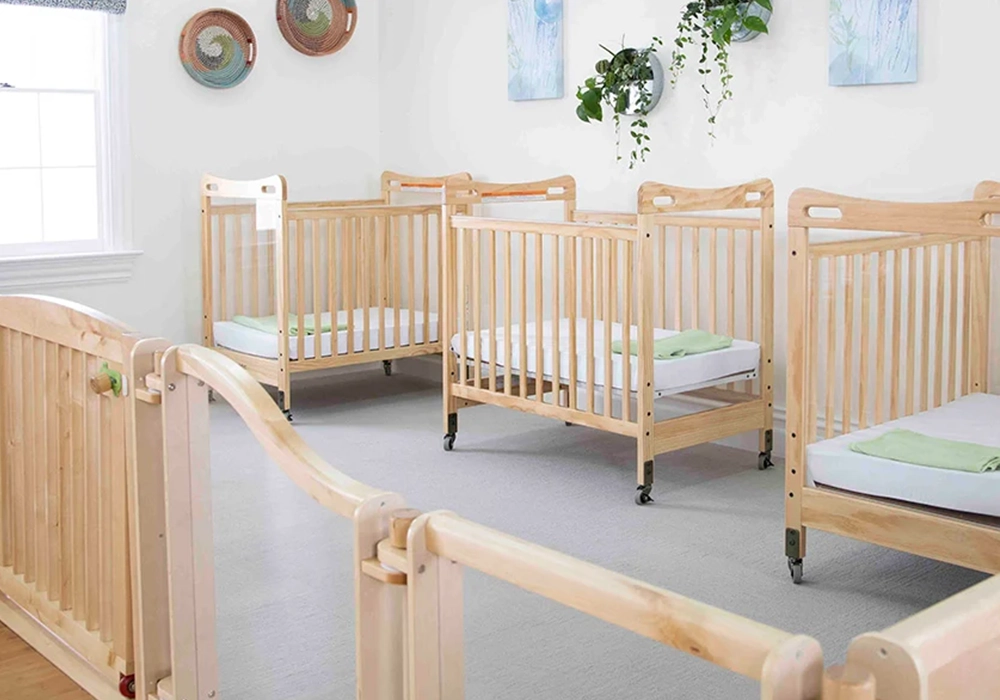
Cribs for Safe and Comfortable Sleep
Our collection of cribs is designed to provide safety, comfort, and style for infants in both home and daycare settings. Featuring a range of options, including traditional wooden cribs, convertible cribs that grow with your child, and space-saving mini cribs, our products meet the highest safety standards. Whether you need a classic crib, a modern design, or a space-efficient solution for smaller rooms, our cribs offer a perfect fit for any nursery or childcare facility.
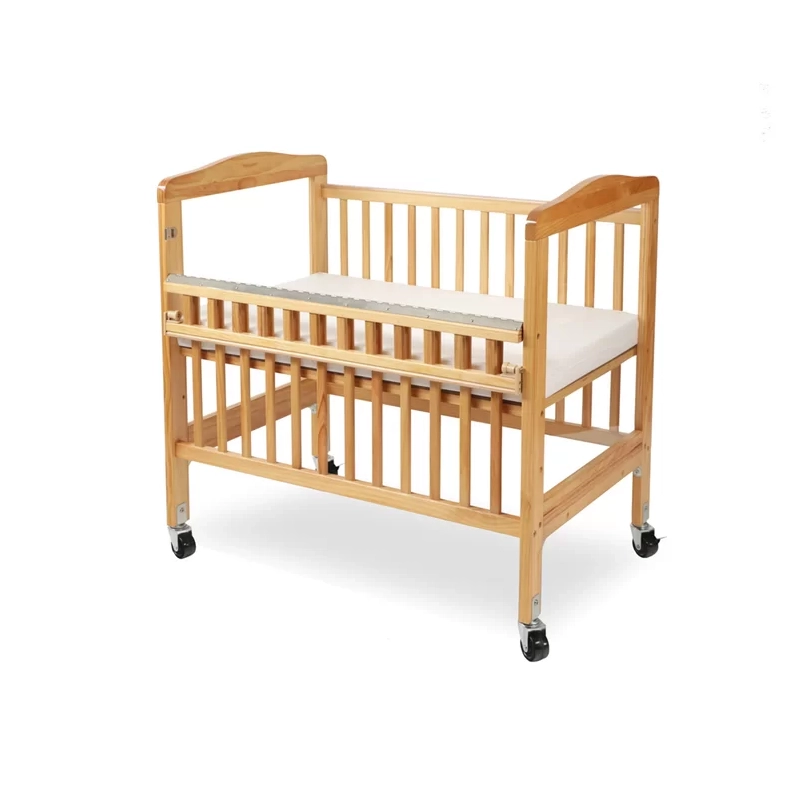
Portable Crib with Mattress
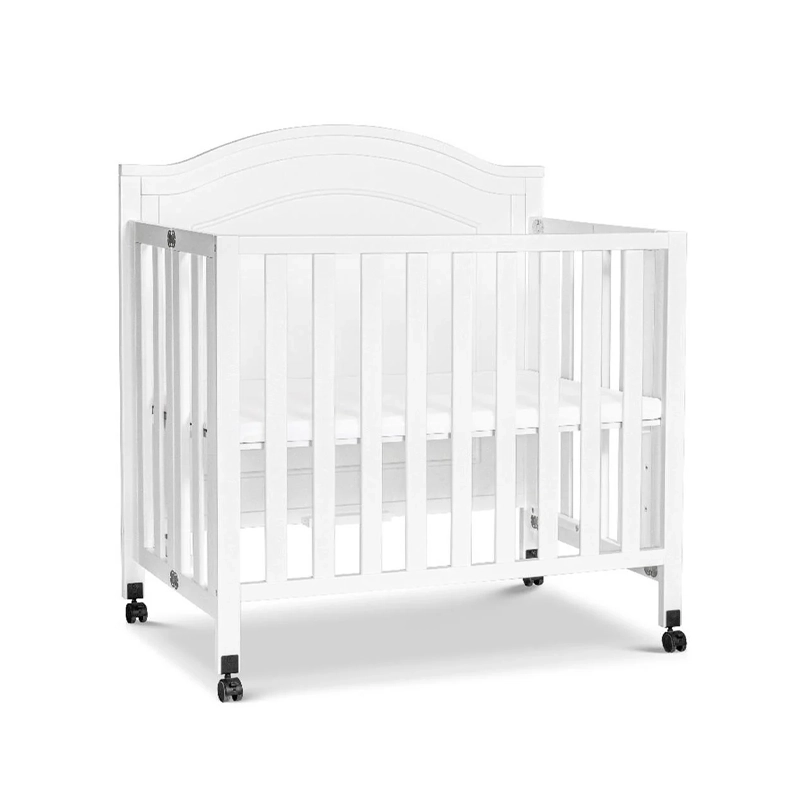
Mini Crib in White
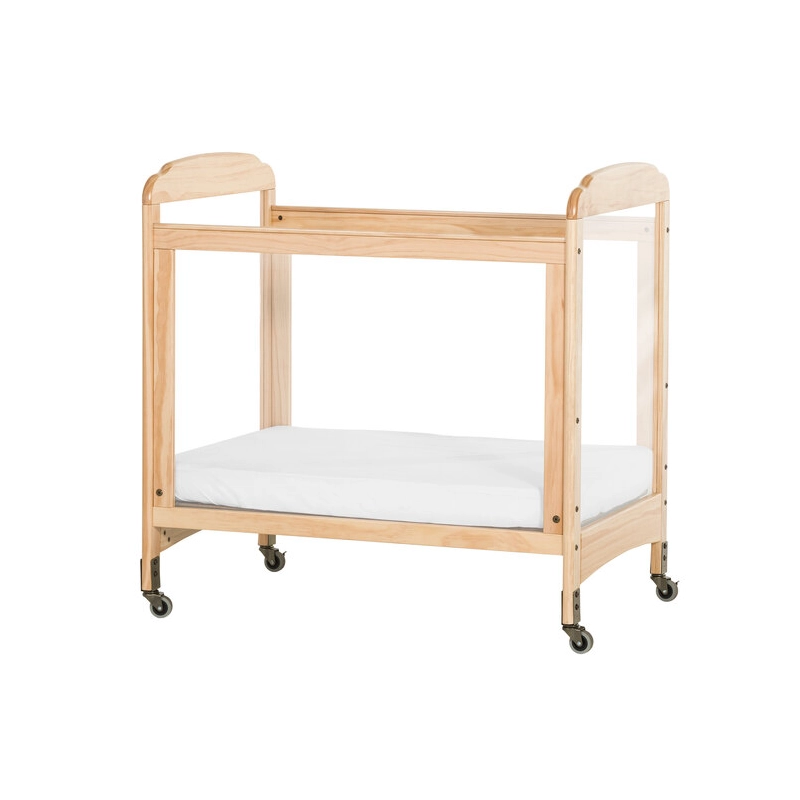
Crib with ClearView Panels

Standard Full-Size Crib

Convertible Crib
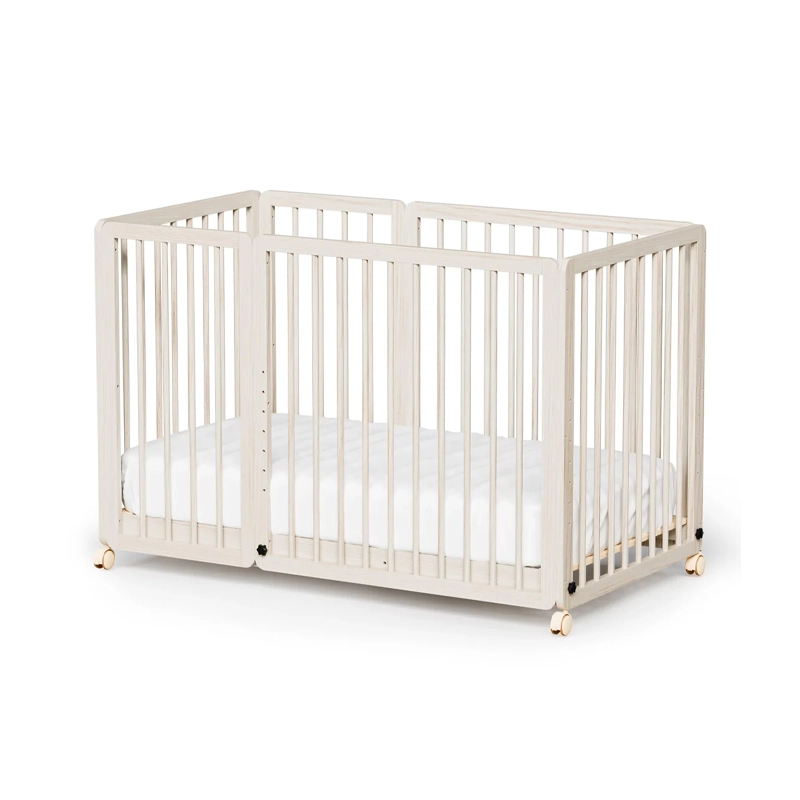
Crib With Wheels
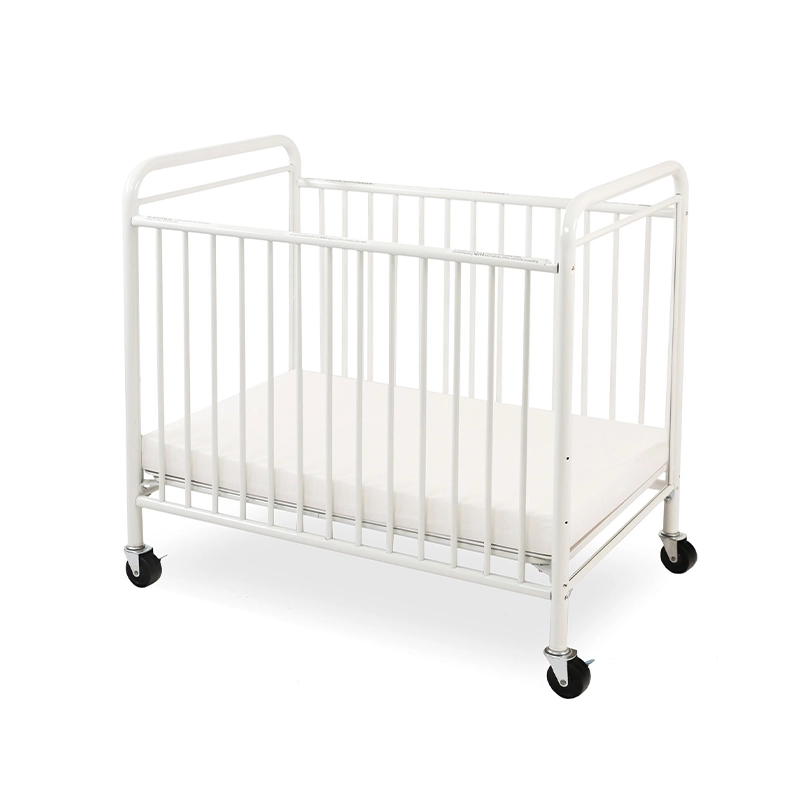
Metal Evacuation Crib
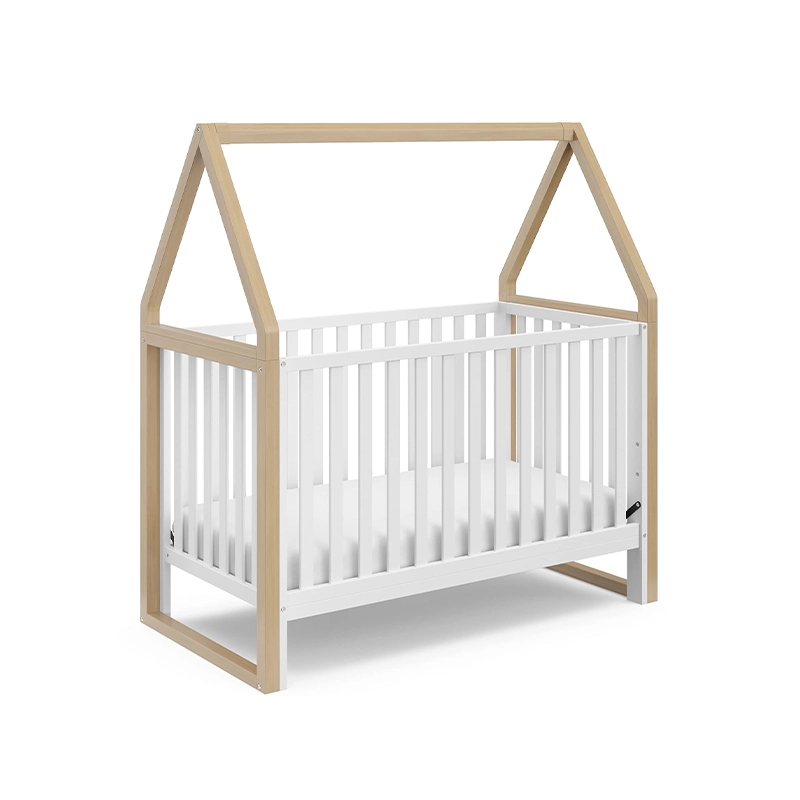
Canopy Style Baby Crib
Types of Cribs
Understanding the types of cribs available will help you choose the one that best fits your needs. Here are the most common options:
Traditional Cribs
These are the most common type, featuring stationary sides and a classic design. They typically come in various finishes to match nursery themes.
Convertible Cribs
Convertible cribs are versatile and can be transformed. They can transition from a crib to a toddler bed, daybed, and even a full-size bed, offering long-term use.
Portable Cribs
Portable cribs are smaller and lighter, designed for families on the go. They are perfect for travel or tight spaces and can often be folded up for easy storage.
Mini Cribs
Mini cribs ideal for small spaces, still sturdy and safe. These are particularly useful for apartments or if you plan to have multiple children in a small room.
Benefits of Cribs
When it comes to your baby’s safety, comfort, and development, a crib is one of your most important investments. Here are the key benefits of using a crib:
- Enhanced Safety:
Cribs are designed with safety as a top priority. Unlike beds or other furniture, cribs feature secure sides to prevent your baby from rolling out or falling. The structured design ensures your little one remains in a safe and confined space, reducing the risks associated with co-sleeping. - Comfortable Sleeping Environment:
Babies sleep significantly, and the crib provides a supportive, relaxed space tailored to their size. Most cribs come with adjustable mattress heights, so you can change the position as your baby grows, ensuring they always sleep at a safe and comfortable level. - Promotes Healthy Sleep Habits:
Having a designated sleep space helps your baby distinguish between day and night and promotes a sense of security, which leads to better, more restful sleep. - Helps Establish Boundaries:
A crib offers an enclosed environment that provides a sense of security for babies. It helps set boundaries and teaches babies that the crib is their designated sleeping space. This is important for encouraging independent sleep habits and avoiding any confusion about where it’s time to sleep versus play.
Safety Features to Look For in Cribs
Safety should always be a priority when choosing a crib. Here are key features to check for. Checking for certification labels like JPMA (Juvenile Products Manufacturers Association) and CPSC (Consumer Product Safety Commission) is also an excellent way to ensure the crib meets safety standards.
- Slat Spacing: The slats should be no more than 2 3/8 inches apart to prevent your baby from getting stuck.
- Non-toxic Paints and Finishes: Ensure the crib is free from harmful chemicals like lead-based paints.
- Sturdy Construction: Ensure the crib is made from solid wood or metal and free from sharp edges or breakable parts.
- Fixed Sides: Avoid cribs with drop sides, as they have been associated with safety hazards.
How to Choose the Best Crib for Your Baby
Choosing the best crib for your baby involves considering several factors. Don’t forget to factor in your baby’s growth. If you’re looking for a long-term investment, consider convertible cribs, which can be adjusted as your baby grows.
- Budget: Set a budget before you start shopping to narrow your options.
- Room Size: Consider the available space in your nursery. A mini crib or portable crib might be more suitable if space is limited.
- Safety Features: Always prioritize safety over design. Look for cribs that adhere to the latest safety standards.
- Material and Design: Choose a crib that matches your aesthetic preferences while being practical.
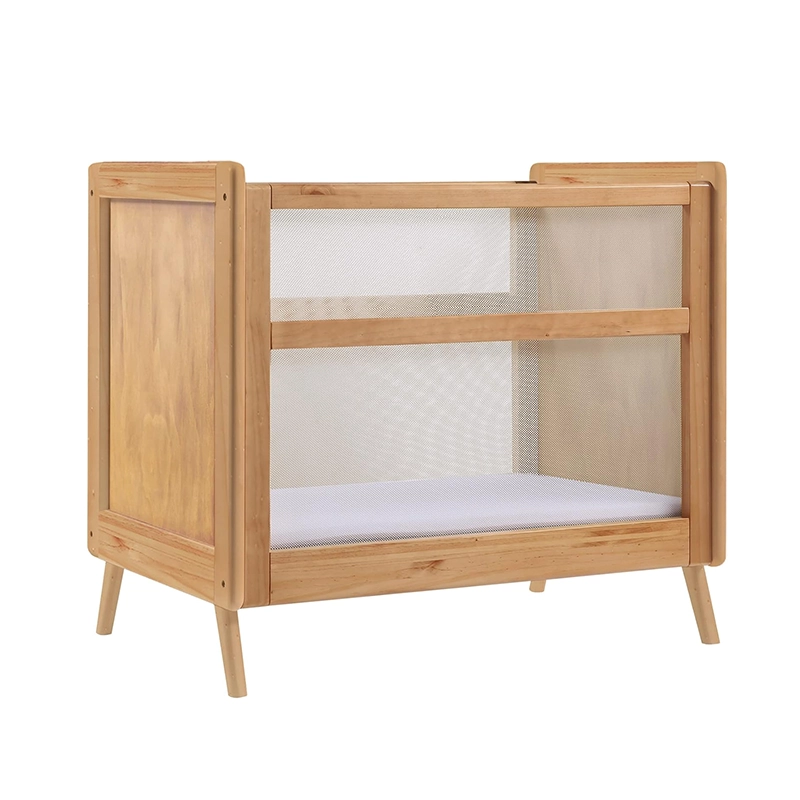
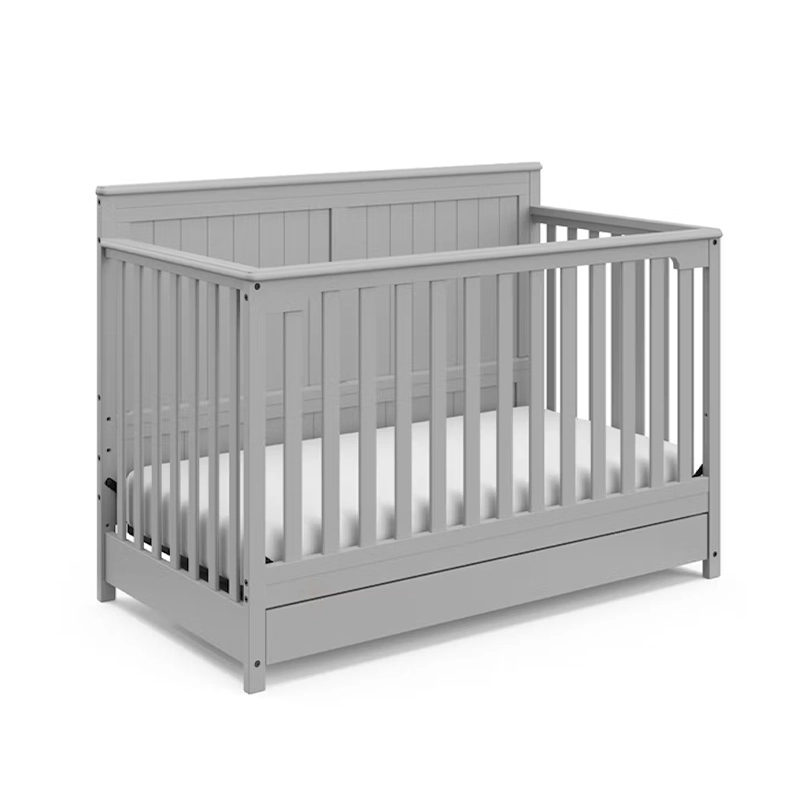

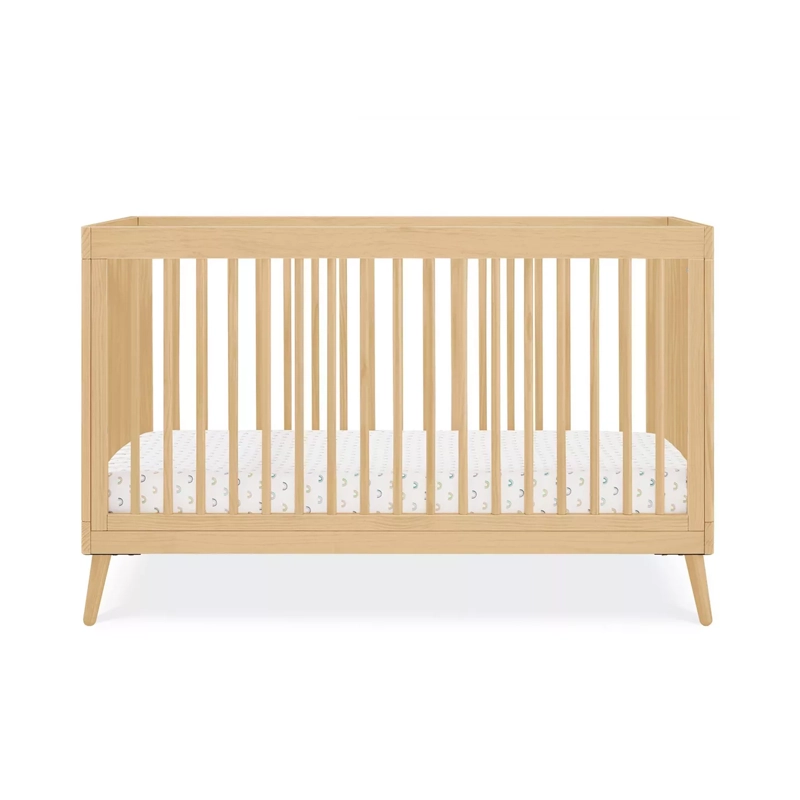

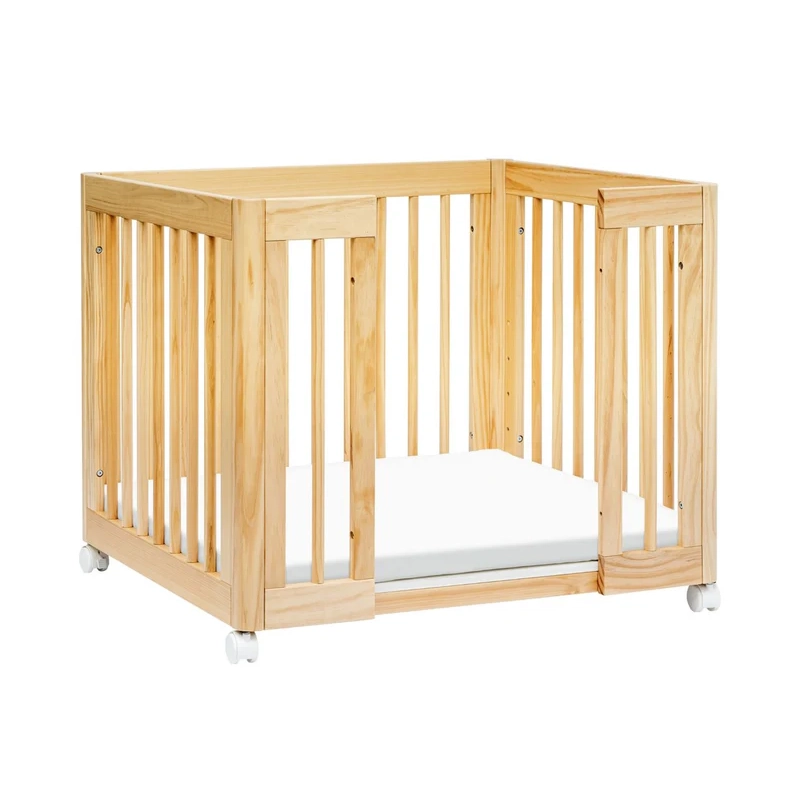


Montessori Bed Types & Styles
Our Montessori bed collection includes a variety of designs to support your child's autonomy and development. From classic floor beds to adjustable toddler beds, each option is designed with child safety and comfort in mind. Choose various sizes, materials, and designs to fit your home and style. Whether you need a simple wooden frame or a customizable bed to meet the needs of your growing child, our Montessori beds offer a practical solution for every family.
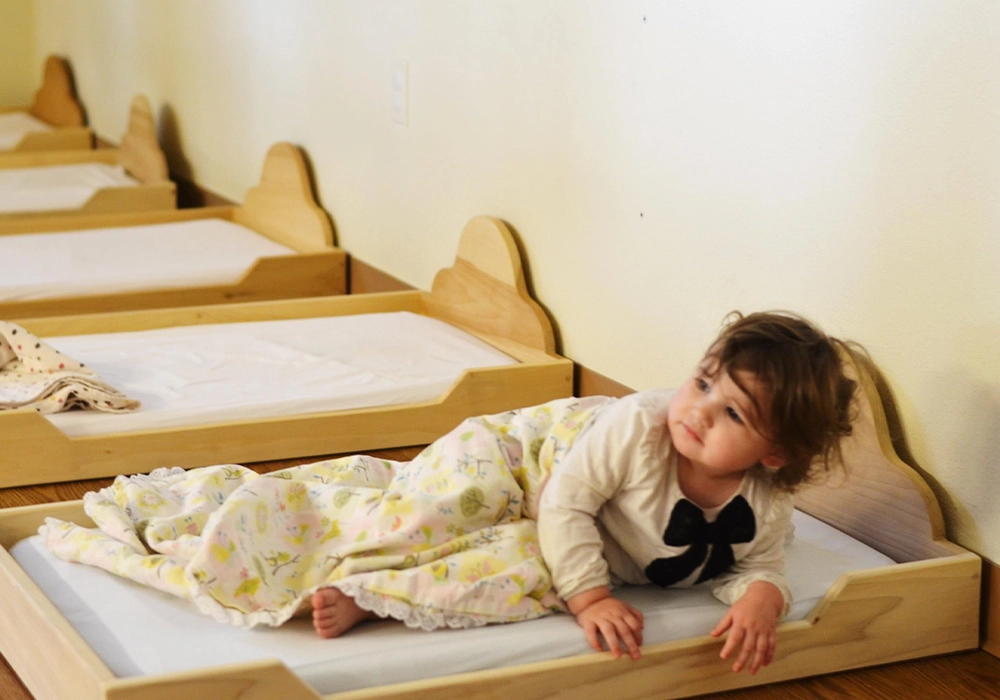
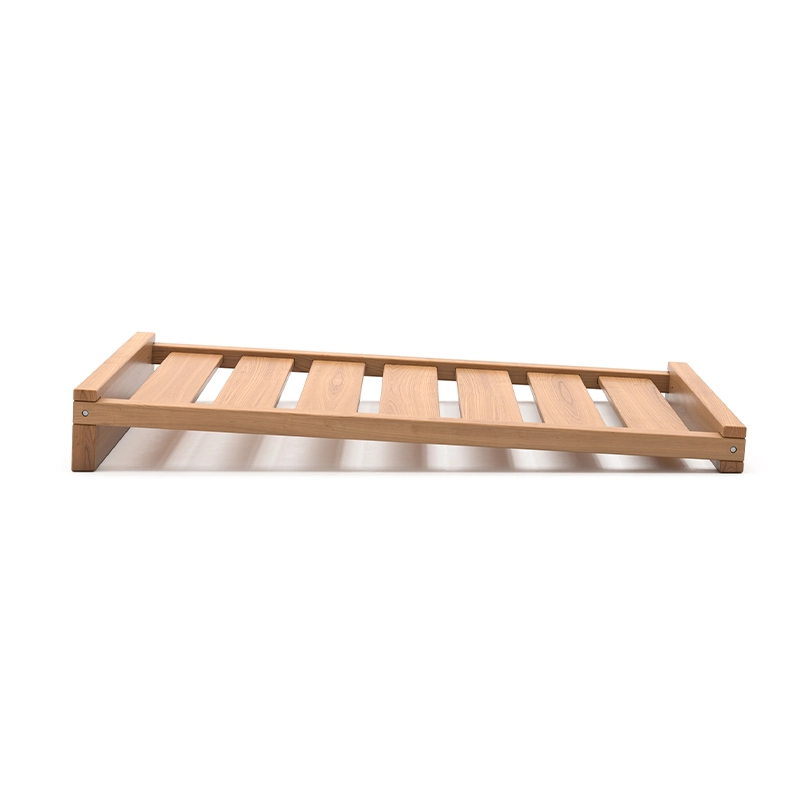
Kids floor bed
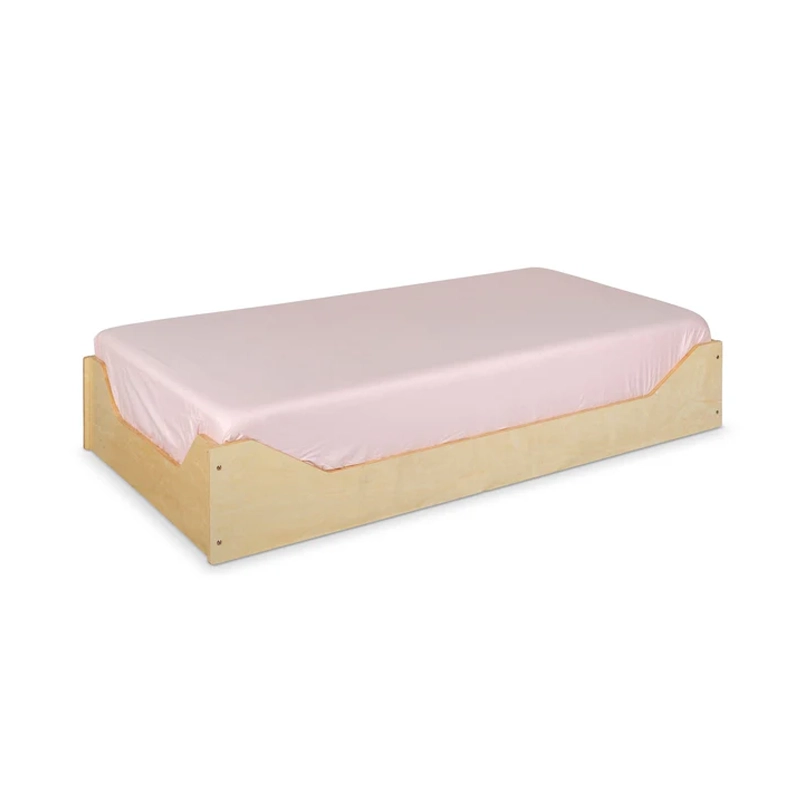
My First Monti Floor Bed
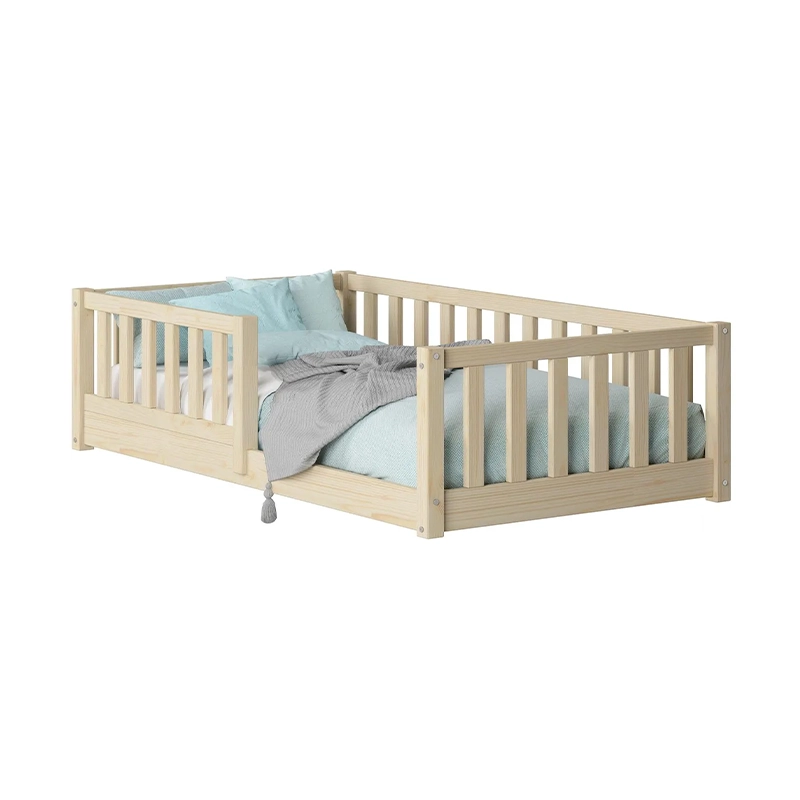
Montessori floor Bed
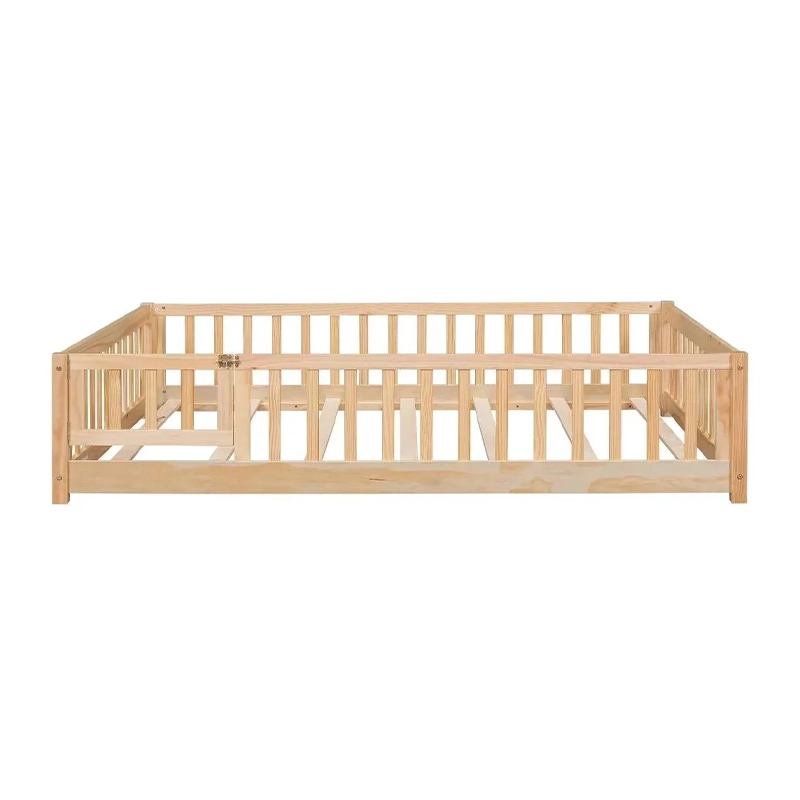
Montessori Bed with Rails

Floor Bed for Toddlers

Casita Kids Montessori Bed

Montessori House Bed Crib

Tent-shaped Floor Bed
What Is a Montessori Bed?
A Montessori bed is a low, often mattress-only bed placed directly on the floor or a low platform. It is designed to be easily accessible to young children, promoting independence by allowing them to get in and out of bed by themselves. Unlike traditional cribs or toddler beds, which often have high sides or restrictive rails, a Montessori bed encourages freedom and autonomy.
The idea behind the Montessori bed is rooted in the belief that children should be free to move, explore, and choose in their own time. By providing a bed that is safe, accessible, and flexible, children are encouraged to take responsibility for their sleep routine, promoting healthy sleep habits and a sense of independence.
Montessori Bed Types

Traditional Montessori Bed
A traditional Montessori bed is often simple, featuring a low platform with no rails or barriers. The idea is to provide a wide-open space that encourages freedom of movement. These beds are typically solid wood, creating a natural, minimalist look that blends seamlessly into the room’s design.
Benefits:
- Encourages children to get in and out of bed on their own.
- Promotes a sense of autonomy and independence.
- It allows children to feel grounded and safe due to its low height.
Design Features:
- Simple, functional, and often made from sustainable materials like wood.
- Low to the ground, usually with a mattress placed directly on the floor or a low frame.
- There are no barriers to prevent children from falling; the design allows for natural exploration.
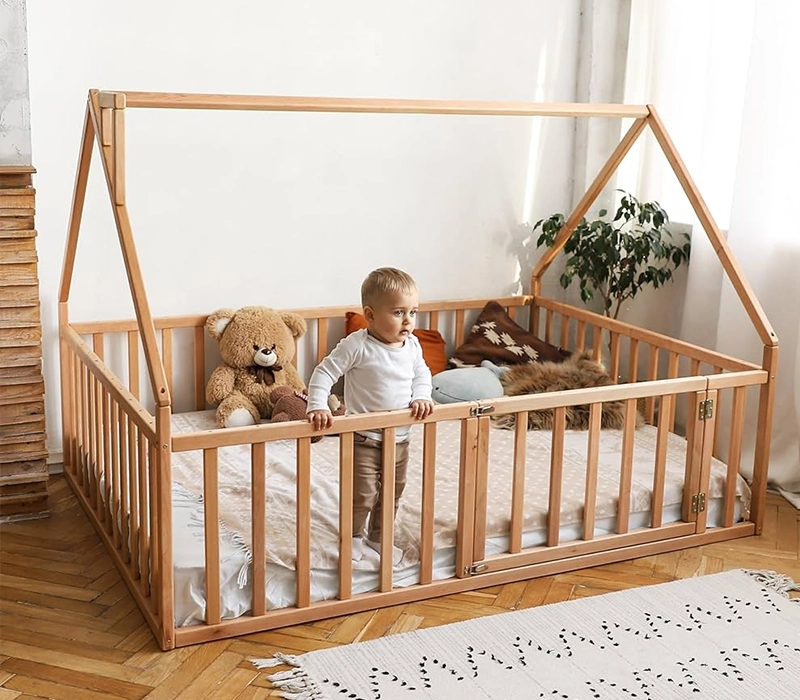
Montessori Floor Bed
This is one of the most well-known types of Montessori beds. A floor bed has a simple mattress placed directly on the floor, offering the ultimate freedom for the child. It’s designed for younger children, particularly babies and toddlers, allowing them to move freely without feeling confined.
Benefits:
- It is highly accessible and safe, especially for younger children.
- Promotes early motor skills as the child can freely crawl in and out of bed.
- It helps build a natural sleep routine where the child can decide when to sleep or wake up.
Design Features:
- Minimalist design with no raised frame.
- The mattress is placed directly on the floor with no sides or railings.
- Perfect for small spaces or families who prefer a less traditional approach.
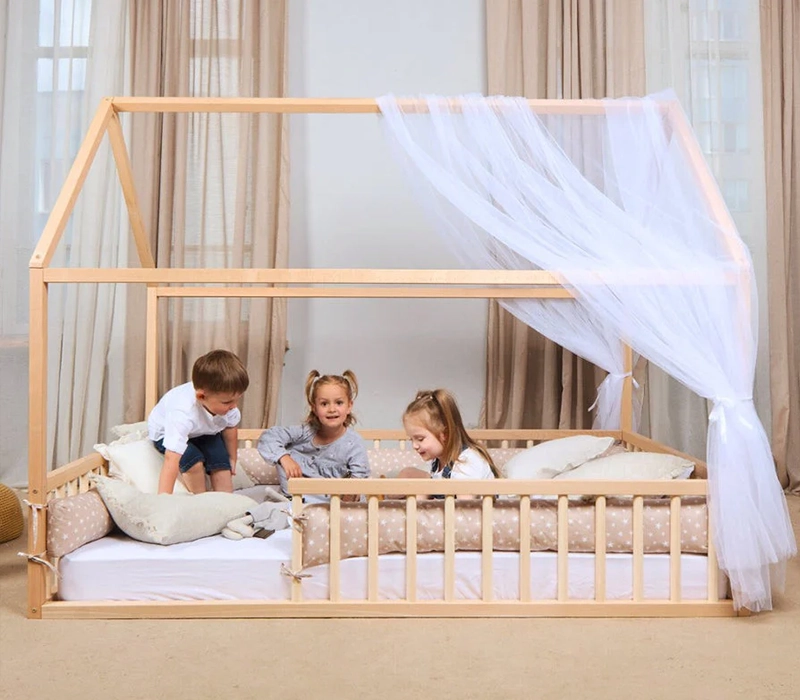
Montessori Toddler Bed
The Montessori toddler bed is typically slightly raised off the ground but still low enough for children to get in and out without assistance. These beds are ideal for toddlers ready for independence but need a safe, supportive sleeping space.
Benefits:
- Allows for easy transitions from a crib to a more independent sleep setup.
- Encourages children to make choices about their sleep schedule and environment.
- It offers safety features like rounded edges or low walls while encouraging autonomy.
Design Features:
- Slightly elevated, often around 6-8 inches from the floor.
- Simple, clean lines with natural wood finishes.
- Some designs may include optional rails but are typically lower and less restrictive.
Budget-Friendly Solutions for Daycare Furniture
We understand budget constraints in educational settings, so we offer affordable daycare furniture, from cheap daycare furniture to discount daycare furniture options, without compromising quality.
-
Encourages Independence A Montessori bed helps children become more independent by giving them the ability to make their own decisions about when to get up, when to go to bed, and how to arrange their sleep environment. They gain confidence in their ability to manage their own routine, an essential skill for their overall development.
-
Promotes Better Sleep Habits With easy access to the bed, children can go to sleep when they feel tired and get up when they wake up. This natural sleep rhythm is much healthier than relying on an adult to enforce bedtime routines. By fostering independence, the Montessori bed helps children develop a sense of self-regulation and responsibility for their own sleep.
-
Creates a Nurturing Environment The Montessori method emphasizes the importance of creating a child-friendly environment that nurtures the child's natural curiosity and development. A Montessori bed is often a key element in this environment, as it allows children to explore and engage with their surroundings without restriction. The floor-level design encourages a sense of freedom and comfort, making the child’s bedroom feel like a safe, welcoming space.
-
Supports Physical Development The low profile of the Montessori bed encourages movement and exploration, which is essential for a child’s physical development. Since the child can easily get in and out of bed, they engage their muscles in ways that promote motor skills, balance, and coordination.
Choosing the Best Montessori Bed
Choosing the best Montessori bed for your child depends on several factors, including age, needs, and the space available in your home. Here are some essential considerations to help guide your decision-making process.
Child’s Age and Developmental Stage
The ideal Montessori bed will vary depending on your child’s age. A floor bed is often the best choice for babies and infants, as it provides maximum accessibility and safety. As your child grows, you may want to transition to a toddler bed with slight elevation or even a full-size Montessori bed.
Considerations:
- A floor bed offers babies flexibility and safety for crawling and early exploration.
- For toddlers, a low platform bed with optional rails can offer more support while fostering independence.
Safety Features
Safety is always a priority, especially for younger children. While Montessori beds are designed to allow for freedom of movement, it’s essential to ensure the bed is stable and that the materials used are non-toxic. Avoid beds with sharp edges, and ensure the mattress is firm and comfortable.
Tips:
- Opt for beds made from solid, non-toxic materials like organic wood.
- Ensure the mattress is firm, as a soft mattress may pose a suffocation risk for babies and toddlers.
- Look for smooth, rounded edges to prevent injuries.
Room Size and Layout
Before selecting a Montessori bed, consider the space in your child’s room. A floor bed is an excellent choice for small spaces, as it gives the child more room to play and move around. A raised Montessori bed might be a better fit for larger rooms, allowing more room for storage or other furniture.
Tips:
- Measure the room to ensure the bed fits comfortably without overcrowding.
- A minimalist design works best in smaller rooms, allowing your child a more open and calming environment.
Budget and Aesthetic Preferences
Montessori beds come in various prices, from affordable DIY options to more expensive designer models. When considering your budget, consider the bed’s long-term value and durability. A simple, sturdy design often works best, and it’s possible to find affordable options that are still high-quality.
Tips:
- Look for natural materials that are durable and easy to maintain.
- Choose a design that complements your existing bedroom aesthetic, as Montessori beds tend to be minimalist.
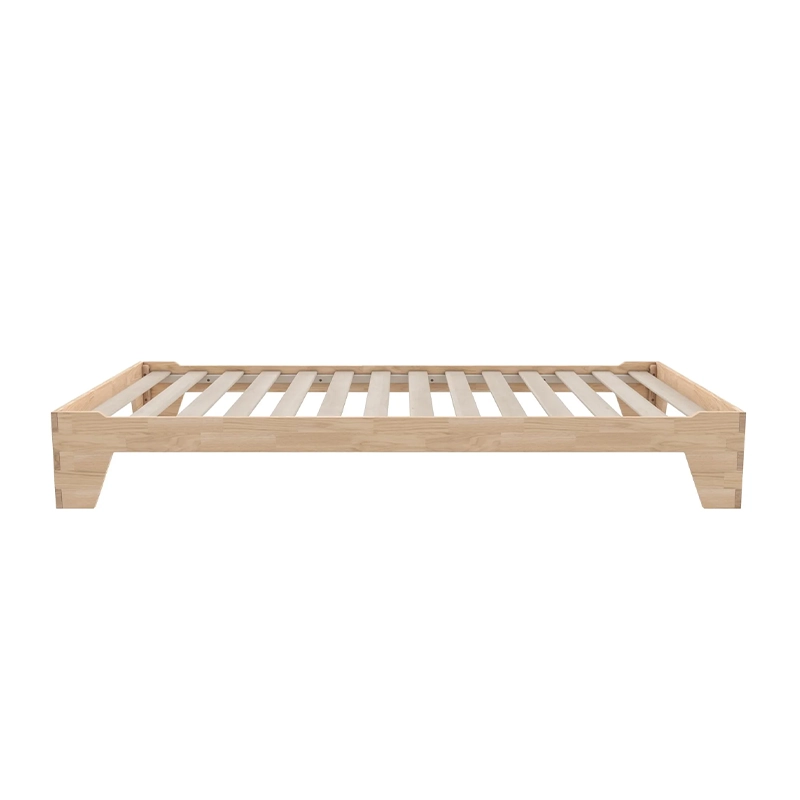
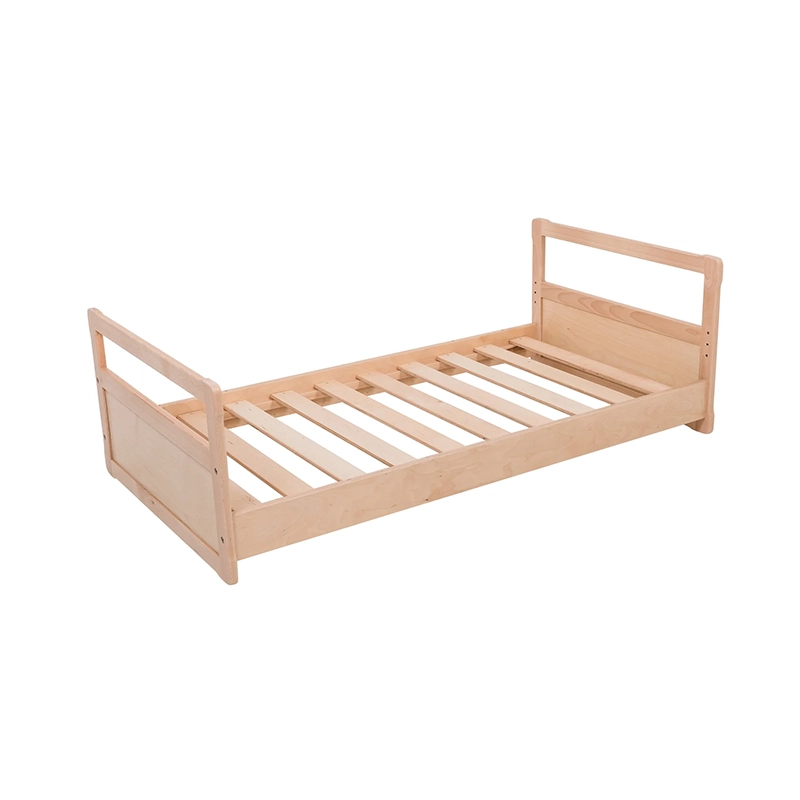


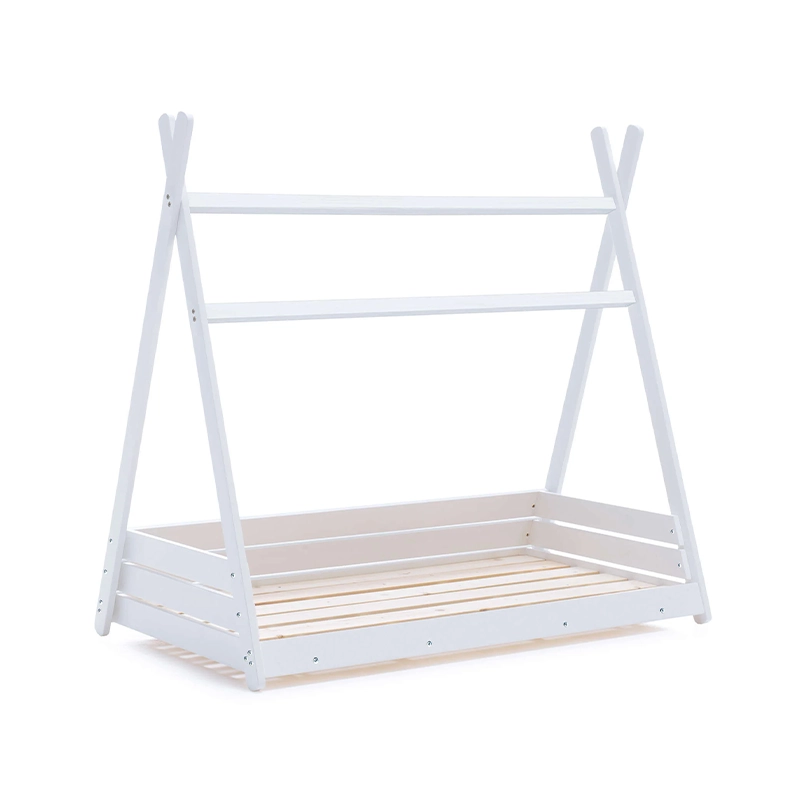
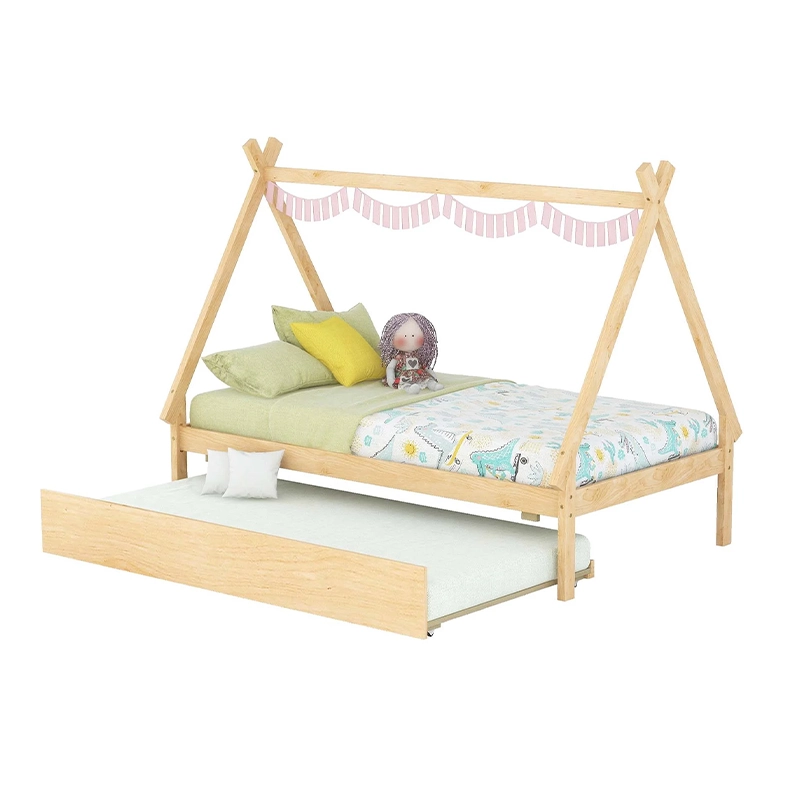

Differences Between Montessori Beds and Traditional Beds
| Feature | Montessori Bed | Traditional Bed |
|---|---|---|
| Height | Low to the ground, allowing easy access for children. | Typically higher off the ground, requiring adult assistance for children. |
| Safety Features | Often has no rails or barriers, designed to prevent injuries with low heights. | Features rails and barriers to prevent falling, which may restrict freedom. |
| Design | Simple, minimalist, natural materials, open space for exploration. | More structured with various designs, including decorative elements and rails. |
| Encourages Independence | Highly encourages self-sufficiency and autonomy. | Less focus on independence, with more reliance on adults for assistance. |
| Age Range | Suitable for infants, toddlers, and older children (with adaptable designs). | Typically used for older children or adults, with limited options for younger ages. |
| Room Layout | Focuses on flexible, open space with accessibility to play. | Often restricts room layout due to large furniture pieces. |
Decorating Suggestions for Montessori Beds
Decorating your child’s room with a Montessori-inspired theme is about creating a functional, safe space that encourages independence. The goal is to use simple, natural elements that foster a sense of freedom and curiosity.
1. Choose Calming Colors
When designing a Montessori bedroom, choose soft, neutral colors that promote relaxation and calmness. Earth tones such as beige, light gray, or soft whites are ideal for creating a peaceful environment. You can add touches of color through soft furnishings, like pillows, rugs, and curtains, but avoid overstimulation.
Suggestions:
- Use light shades of blue, green, or lavender for a calming atmosphere.
- Neutral walls with colorful toys and bookshelves add contrast without overwhelming the senses.
2. Create an Inviting Play Area
Incorporating a play area in your child’s bedroom is crucial for their development. Montessori bedrooms often feature an open play area where children can engage in activities independently. This area can include floor cushions, simple toys, and storage that is easily accessible.
Suggestions:
- Keep toys organized and within easy reach using open shelves or baskets.
- Incorporate natural elements like wooden toys, a small climbing structure, or soft rugs for added comfort.
3. Personalized Touches
Montessori rooms are often personalized to reflect the child’s unique interests. Add artwork, family photos, or items that spark the child’s curiosity. Let the child have a say in how their room is decorated, as this will make them feel more connected to the space.
Suggestions:
- Hang framed prints of nature scenes or animals.
- Include a small shelf for displaying the child’s favorite books or toys.
Daycare Cots Series
Discover our wide range of daycare cots! These cots are designed for durability, easy maintenance, and maximum comfort for young children. Choose from stackable cots for space-saving storage, lightweight models for portability, and heavy-duty cots for long-term use. With multiple sizes and configurations available, our daycare cots meet the diverse needs of any facility.

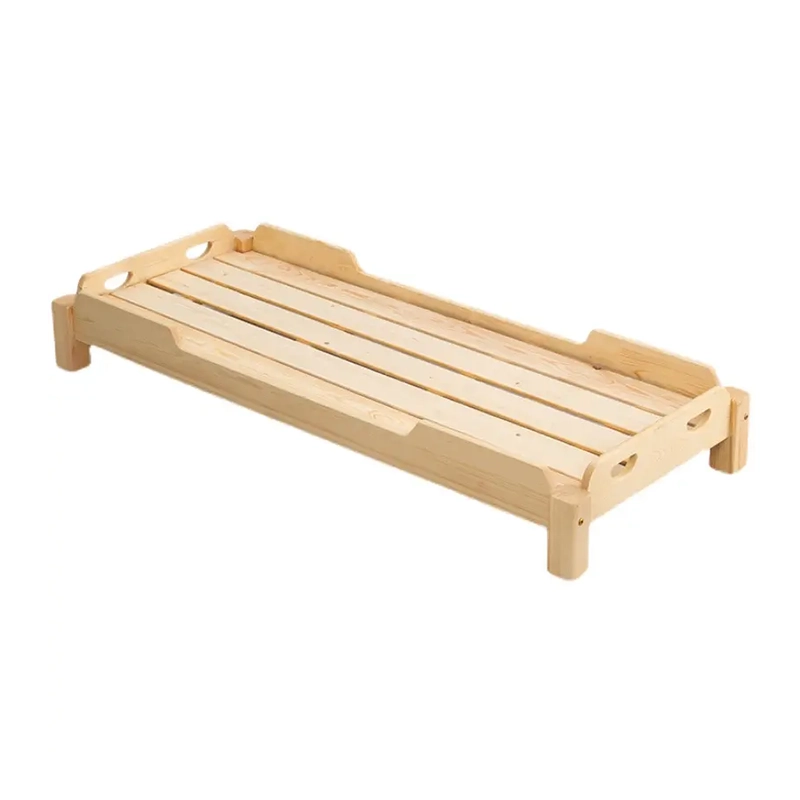
Wooden Nep Bed
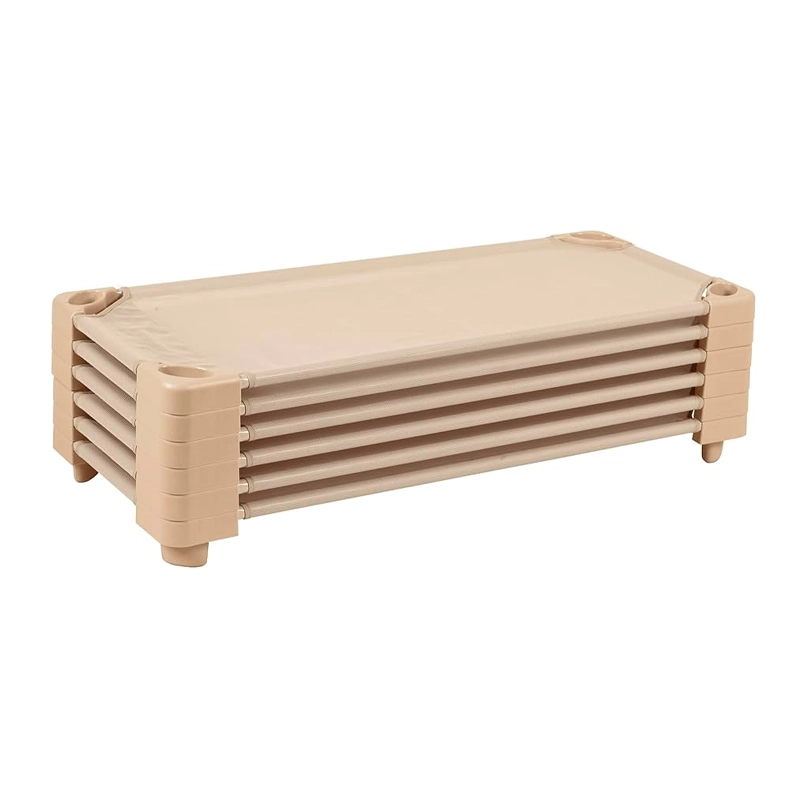
Children's Naptime Cot
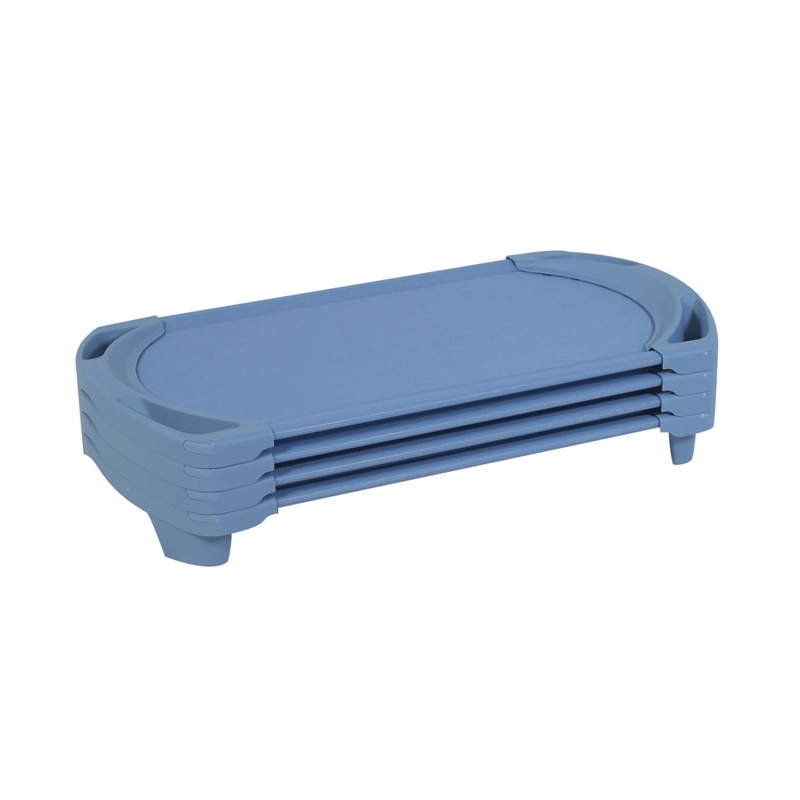
Sleep Cot for Daycare

Colorful Daycare Cot
Understanding the Importance of Daycare Cots
Sleep time is critical for children's health and well-being when running a daycare. During naps, kids recharge, helping them stay alert and active during their waking hours. Daycare cots are designed to create a safe and hygienic resting environment for toddlers and young children. Unlike regular cots or beds, daycare cots are stackable, durable, and easy to clean, making them perfect for busy daycare centers.
Advantages of a Daycare Cots
Promote Restful Sleep
Children need adequate rest for optimal growth and development.
Space-Saving Design
Daycare cots are stackable, saving valuable space in crowded daycare rooms.
Hygiene
These cots are made from materials that are easy to clean, reducing the spread of germs.
Safety Features
High-quality daycare cots meet safety standards, providing peace of mind for caregivers.
Key Features to Look for in Daycare Cots
Choosing the right daycare cots is crucial for the children’s safety and comfort. Several factors should be considered when selecting the perfect cot for your daycare facility:
1. Safety Standards and Regulations
The safety of children is the top priority in any daycare center. Daycare cots should meet the standards of regulatory bodies such as the Consumer Product Safety Commission (CPSC) and ASTM International. These standards ensure that the cots are designed to minimize the risk of injury. Look for:
- Sturdy, non-toxic materials
- Rounded corners to prevent accidents
- Non-slip feet to prevent movement during nap time
2. Durability and Material
Daycare cots are subjected to daily use, so they must be durable. Opt for cots made from materials like steel frames with vinyl or fabric surfaces. These materials are resistant to wear and tear, easy to clean, and long-lasting.
3. Stackability and Storage
Space is often limited in daycare centers, so stackable cots are a great option. This feature allows for easy storage when not in use, freeing up space for other activities.
4. Comfort and Support
Comfort is essential for quality rest. Daycare cots should have padded surfaces that adequately support a child’s growing body. Some cots even have adjustable features to cater to the comfort needs of different children.
5. Easy-to-Clean Design
Since daycares deal with young children, hygiene is essential. Daycare cots should have removable covers or surfaces that can be easily wiped down with sanitizing products.
Different Types of Daycare Cots
There is no one-size-fits-all approach when it comes to daycare cots. Different types of cots serve different purposes, and choosing the one that fits your needs best is important. Let’s explore the different types:

Standard Cot
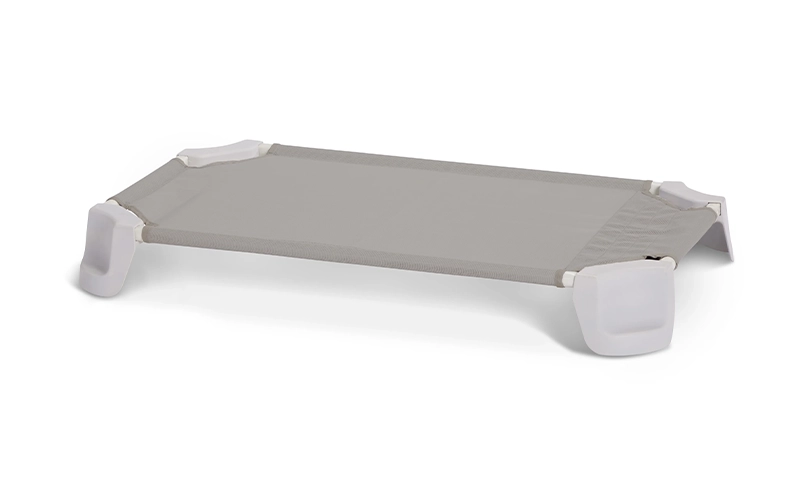
Foldable Cot
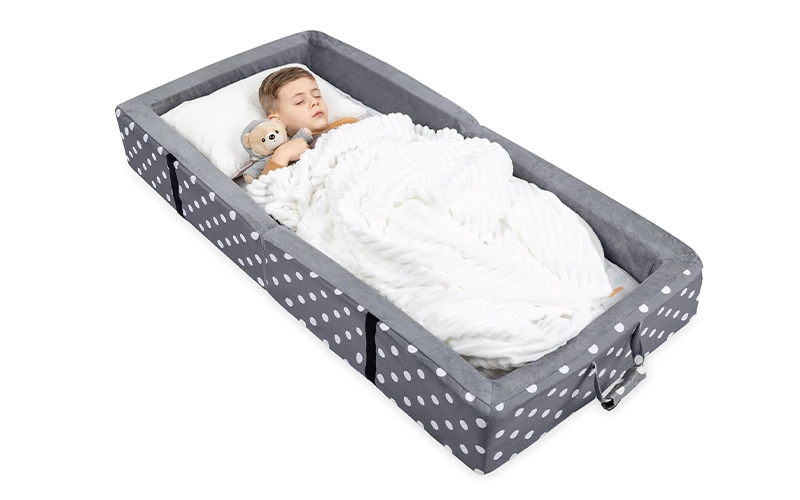
Foam Cots
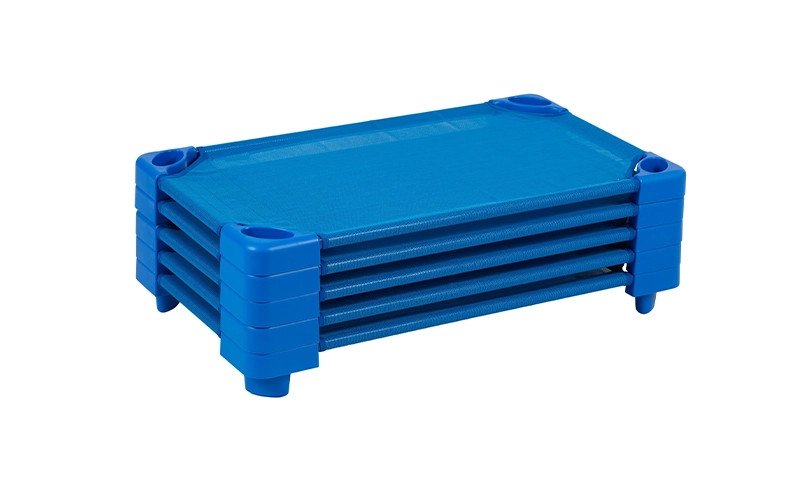
Mini Cots
Top Considerations When Choosing Daycare Cots
When purchasing daycare cots, you must consider several considerations to ensure you make the best choice for your facility.
1. Budget
Daycare centers often operate within strict budgets, so cost-effectiveness is essential. However, while going for the cheapest option is tempting, don’t compromise on safety or quality. Look for affordable cots that also meet the necessary safety standards.
2. Age Group
Consider the age group of the children in your daycare. Younger children or toddlers may need a smaller cot, while older children may require a standard-sized cot. The cot’s dimensions should also comfortably accommodate the size of the child.
3. Number of Children
The number of children in your daycare will affect how many cots you need. Be sure to purchase enough cots to ensure each child has their own space during nap time. Consider purchasing extra cots for backup, as cots may occasionally need cleaning or maintenance.
4. Ease of Use
Daycare workers should find it easy to set up and remove cots. Choose lightweight, stackable, and easy-to-assemble or disassemble cots.
What is the difference between a daycare cot and a mat?
| Feature | Daycare Cot | Daycare Mat |
|---|---|---|
| Structure | Elevated with a frame, often stackable | Flat, non-elevated surface |
| Comfort | Typically includes a thin foam mattress or pad | Usually consists of foam only or foam with a fabric cover |
| Portability | Lightweight, stackable, easy to store | Extremely portable, can be rolled up and stored easily |
| Safety | Often includes safety rails to prevent falls | No rails, might require supervision to ensure safety |
| Durability | Designed for regular use in daycare environments | May wear out faster due to lack of structural support |
| Space Efficiency | Stackable to save space when not in use | Takes up less vertical space but can spread out on the floor |
| Use Cases | Suitable for children needing a more structured sleeping area | Ideal for floor-based napping or outdoor environments |
What are the daycare cots sizes?
Daycare cots come in various sizes to meet the specific needs of children at different stages of growth. It’s essential to understand the different cot options available, as choosing the right size will ensure that children sleep comfortably and that your space is used efficiently.
Toddler Cot
A toddler cot is designed specifically for younger children, typically those between the ages of 1 and 3 years. Toddler cots typically measure around 38 inches long by 24 inches wide, perfect for more minor children.
Standard Daycare Cot
These cots are generally larger than toddler cots, with dimensions ranging from 40 to 52 inches in length and 24 to 28 inches in width. Standard daycare cots provide enough space for children between the ages of 3 and 5, accommodating children as they grow and develop.
Extra Large Cot
These cots are typically 54 to 60 inches long and 28 to 32 inches wide, offering plenty of space for children over the age of 5 years. The extra size makes these cots ideal for older kids or children taller than the average child.
Managing Daycare Cot Storage and Space Efficiency
Daycare spaces are often limited, so effective storage methods can help save space. Here are some tips to help you store cots efficiently while keeping your daycare organized:
Utilize Stacking Functionality
Most daycare cots are designed to be stackable, which allows you to take advantage of vertical space and save floor space. When not in use, stacking the cots can significantly free up space for other activities.
Use Foldable Cots
If your daycare has extremely limited space, you might consider using foldable cots. These cots are convenient to store, portable, and ideal for smaller daycare facilities or when cots are used infrequently.
Portable Cot Storage Cabinets
For better cot management, you can purchase specialized storage cabinets for the cots. These cabinets help keep the cots organized and easily accessible while ensuring they are kept clean and ready for use.
Maintenance and Cleaning Tips for Daycare Cots
Maintaining daycare cots is not only crucial for extending their lifespan but also essential for ensuring the hygiene of the sleeping area. Below are some effective cleaning and maintenance tips:
Regularly Clean Cot Covers
To ensure the cot remains clean and hygienic, it is recommended to regularly maintain and clean the cot covers. This will help eliminate stains and bacteria.
Use Antibacterial Cleaning Products
Use mild, non-toxic antibacterial cleaning agents for children to wipe down the cot surface. This is particularly important during flu season, as disinfecting helps prevent the spread of illness.
Regularly Check the Frame
Every so often, inspect the cot’s metal frame or support structure. Ensure there are no signs of rust or loose parts that could compromise the cot’s stability and safety.
FAQs
When selecting these items, prioritize safety, comfort, and durability. Ensure that cribs meet safety standards set by authorities like the Consumer Product Safety Commission, which include specifications on slat distance and side height. Montessori beds, often placed directly on the floor to encourage independence, should be free of harmful chemicals and have a sturdy construction.
For cribs, high sides and sturdy bars are crucial to prevent falls. Montessori beds should have a safe environment, and precautions should be taken to child-proof the room. Daycare cots need to be sturdy and easy to clean, with sufficient spacing to prevent the spread of germs and ensure easy supervision.
Baby cribs used in daycare should meet specific safety standards set by the Consumer Product Safety Commission (CPSC), including fixed side rails, slats spaced no more than 2 3/8 inches apart, and no drop-side mechanisms.
Montessori beds are designed low to the ground to allow children to enter and exit independently, fostering autonomy and confidence in young children. This encourages self-reliance and supports their natural growth and developmental milestones.
Look for cots that are easy to clean, made of durable materials, and designed with safety in mind. The spacing between cots in a childcare setting should follow local regulations to ensure health and safety, typically allowing for adequate air circulation and space for caregiver access.
Montessori beds can range from simple floor beds to more structured house-frame beds. Each type encourages safety and accessibility for the child, and variations often include features to add aesthetic appeal or thematic elements to a child's bedroom.
Regular cleaning with child-safe disinfectants is essential. Check for loose screws, damaged parts, or wear and tear regularly to ensure the crib remains safe for use. Mattresses should be firm, fit snugly within the crib, and be covered with a waterproof protector.
Benefits include promoting independence and easier transitions from bed during night times. Drawbacks can include the potential for children to wander if the room is not fully baby-proofed and concerns about floor-level allergens or colds.
Choose cots with firm mattresses that do not sag under the child's weight and ensure they have a tight-fitting sheet. The material should be breathable yet sturdy to support the child's back and provide comfortable sleep.
For older children, consider adjustable Montessori beds that can grow with the child, offering features like expandable frames or interchangeable components that adapt to their evolving needs.
Transition typically occurs between 18 months and 3 years old. The right time depends on the child's development, such as their ability to climb out of the crib or height.
Ensure at least 18 inches of space between each cot to facilitate adequate supervision, prevent the spread of germs, and allow caregivers easy access to each child during naptime.

